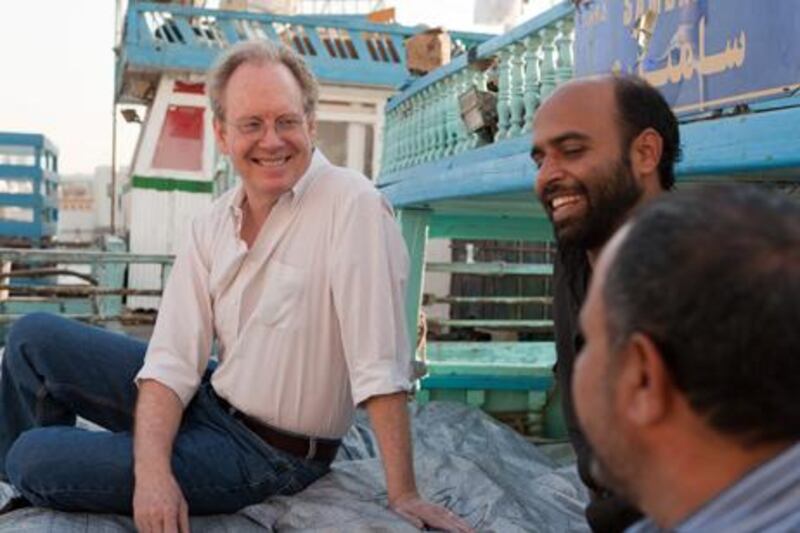This is not a typical documentary. The Floating Life of Dubai Creek chooses poetry over prose and silence above speech, as a way of portraying one of the city's most historical locations.
The man behind the lens is Tim Kennedy, an assistant professor at the College of Architecture, Art and Design at the American University of Sharjah. He went on to scoop the award for Best Film at the third Ares Film and Media Festival in Syracuse, Italy, last year. The film was also shown at the 2011 New York International Film Festival. At the moment he is working on screening the 22-minute film, funded by an AUS faculty research grant, to UAE audiences. He is also developing a sequel.
Over a period of at least nine months, Kennedy dedicated his weekends making trips to the creek and spending time with the sailors around the dock area.
The American quickly developed a bond with his subjects, who nicknamed him "Mr New York".
"I was aiming to paint a picture and to promote a side of Dubai that is not as highlighted," says Kennedy. "The creek is the treasure of Dubai. It was only when I was three quarters into filming that I envisioned the overall structure - that it would be a day in the life of the creek. In design, you try to translate the spirit of the place which is something you cannot find on any map."
Kennedy first arrived in Dubai in 2005. He checked off all the popular hot spots on the must-see list, but it was the creek that left a lasting impression on him. Later that same year he joined the AUS faculty and it took some two years to gather the research and another two years for filming and post-production, with the help of his colleague Zlatan Filipovic. Kennedy's knowledge of the fine arts, landscape architecture and urban design also helped shape the film.
"It is not a typical film experience," he says. "It is a kind of mosaic that portrays the creek using only the language of film. I wanted to show the fragile ecology and the dynamic mix of cultures. There is a lot of fast-paced development in Dubai and I was concerned it might affect the creek."
It is a story, he says, of a place and a people that many of the UAE's inhabitants have yet to encounter. "The remarkable thing about the creek is Dubai would not have the same land form without it. There is also this great history to the city that is shadowed in the creek."
The film showcases powerful images of the daily routine of sailors, on and off duty, like how they keep themselves entertained playing dominoes and card games on the floor. One of the most memorable scenes is of one sailor leaning into the window of a dhow, balancing himself with one hand, while in the other he holds a book on learning English.
"When I showed the film in the United States, in places such as museums and design schools, people found it very exotic. It was something they had not seen on the news channel. Even for me, making the film helped me see the Middle East from a new vantage point," said Kennedy.
One of the main challenges was the language barrier, which one of his students helped him with.
"In terms of language, there was a lot to contend with because in broken conversations one can only go so far, but it didn't matter because they were very hospitable and I was surprised by their willingness to be involved," says Kennedy.
As for the award, he says it was a pleasant surprise. "I didn't really know what to expect. Receiving an award was not the driving force behind the project but once it was complete, I felt a responsibility to put it out there for people to see." Sometimes, Kennedy finds himself returning to the creek. However, many of the men he has met have now travelled on.
"It's an exciting world. I got to see many ships coming from the other side of the Gulf that I may not have ever seen," he said. "They asked me why I would leave America and I tell them that as much as I like home, I like to travel, and as much as I like to travel, I like to go home - and they all nodded because they understood."
For public screenings or to obtain a copy for presentations, contact Tim Kennedy via email at tkennedy@aus.edu





